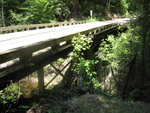Earth911.com has partnered with the association to provide more information to visitors of LampRecycle.org.
The agency shares data on coal ash sites, including ownership, location, hazard potential, and dates of last regulatory or company assessment.
Companies offer integrated technology and communication to help shape projects and request grants from the DOE's Smart Grid Investment Grant Program.
NIST scientists have probed a metal-organic framework that soaks up acetylene like a sponge. The finding may be useful to the chemical industry in the future.
Johns Hopkins School suggests the European Union may want to consider revising its test approaches to cut costs.
The coatings eliminate the need for harsh detergents and solvents that may contain phosphates and be discharged into lakes and streams, according to a presentation at the American Chemical Society's meeting this week.
Shelton Group surveys more than 1,000 U.S. consumers who at least occasionally buy green products and discovers there is no "typical" green consumer.
According to Dr. Brian Durie, the study supports the notion that genetic factors affecting toxin breakdown may be related to the development of myeloma.
Those who want to voluntarily clean up a brownfield site in Ohio may be eligible for discounted insurance through a new state program.
Annual Alliance of Hazardous Materials Professionals conference will look at the critical role members play in developing sustainability and preparing for disasters.
Wind and solar power jobs appear to offer less risk than those associated with coal, oil, and natural gas, according to Drs. Sumner and Layde.

Infrastructure
MACTEC Engineering and Consulting assembled a design team for the U.S. Forest Service to evaluate the risks and determine mitigating measures to enable safe passage for human traffic and aquatic species in nine National Forests.
The National Safety Council names Square D Services a winner for occupational achievement for reporting few injuries and illnesses and no fatalities in 2008.
A portion of the Natrium facility, which was built in 1957, uses an outdated, mercury-based production process that remains in use at only four of the 119 chlorine plants in the United States.
At blends above E25, there is increased potential for different types of damage to materials and components and, as a result, there are more stringent requirements.